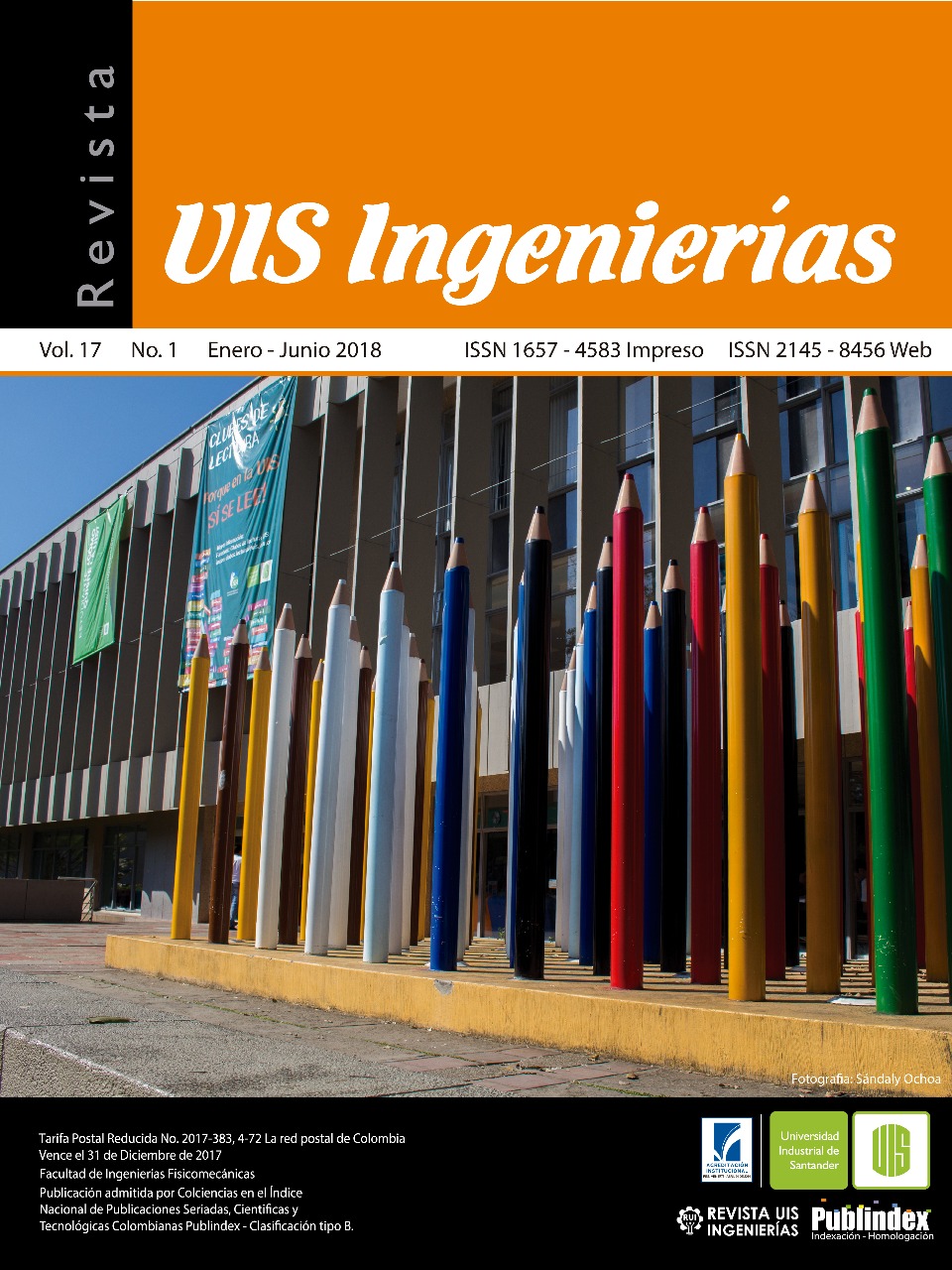Métodos de aproximación Lagrangiano-Eulerianos para leyes de equilibrio y leyes de conservación hiperbólicas
Publicado 2018-01-11
Palabras clave
- Leyes de conservación,
- lagrangiano-euleriano,
- volumen finito
Cómo citar
Resumen
Un nuevo volumen finito de control es presentado en un enfoque Lagrangiano-Euleriano (ver artículos [1, 28]), en este, un dominio de espacio-tiempo es estudiado con el fin de diseñar un esquema localmente conservativo. Tal esquema tiene en cuenta el delicado balance no linear, entre las aproximaciones numéricas del flujo hiperbólico y el término fuente, en problemas de ley de balance ligados con leyes de conservación puramente hiperbólicas. Además, combinando algunas ideas de este nuevo enfoque, hacemos una construcción formal de un nuevo algoritmo para resolver importantes problemas de leyes de conservación en dos dimensiones espaciales. Un conjunto pertinente de experimentos numéricos para diferentes modelos es presentado para mostrar evidencia que soluciones cualitativamente correctas son aproximadas.
Descargas
Referencias
J. Aquino, F. Pereira, H. P. Amaral Souto, A. S. Francisco. “A forward tracking scheme for solving radionuclide advective problems in unsaturated porous
media,” Int. J. of Nuclear Energy Science and Technology, vol. 3, no. 2, pp. 196-205, 2007.
J. Aquino et al.A Lagrangian, “Strategy for the numerical simulation of radionuclide transport problems,” Progress in Nuclear Energy, vol. 52, no. 3, pp. 282-291, Apr., 2010.
A. Bressan and W. Shen, “Optimality conditions for solutions to hyperbolic balance laws,” Contemporary Mathematics, vol. 426, pp. 129-152, 2007.
S.-C. Chang, “A critical analysis of the modified equation technique of Warming and Hyett,” Journal of Computational Physics, vol. 86, no. 1, pp. 107-126, Jan., 1990.
A. Chalabi, “On convergence of numerical schemes for hyperbolic conservation laws with stiff source terms,” Mathematics of Computation of the American Mathematical Society, vol. 66, no. 218, pp. 527-545, 1997.
G.-Q. Chen C. D. “Levermore and T.-P. Liu, Hyperbolic conservation laws with stiff relaxation terms and entropy,” Communications on Pure and Applied Mathematics, vol. 47, no. 6, pp. 787-830, Jun., 1994.
I. Christov and B. Popov, “New non-oscillatory central schemes on unstructured triangulations for hyperbolic systems of conservation laws,” Journal of Computational Physics, vol. 227, pp. 5736-5757, May., 2008.
M. G. Crandall and A. Majda. “Monotone difference approximations for scalar conservation laws.” Mathematics of Computation, vol. 34, no. 149, pp. 1-21, 1980.
C. M. Dafermos, “Hyperbolic conservation laws in continuous physics,” 2nd edition Springer-Verlag, vol. 227, no. 11, pp. 1-626, 2005.
R. Donat and I. Higueras and A. Martinez-Gavara, “On stability issues for IMEX schemes applied to 1D scalar hyperbolic equations with stiff reaction terms,” Mathematics of Computation, vol. 80, no. 276, pp. 20972126, 2011.
J. Douglas, Jr, “Finite difference methods for twophase incompressible flow in porous media,” SIAM Journal on Numerical Analysis, vol. 20, no. 4, pp. 681696, 1983.
J. Douglas, Jr and C.-S. Huang. “A locally conservative eulerian-lagrangian finite difference method for a parabolic equation.” BIT Numerical Mathematics, vol. 41, no. 3, pp. 480-489, Jun., 2001.
J. Douglas, F. Pereira and L. M. Yeh. “A locally conservative Eulerian-Lagrangian numerical method and its application to nonlinear transport in porous media,” Computational Geosciences, vol. 4, pp. 1-40, May., 2000.
J. Douglas, Jr and T. F. Russell. “Numerical methods for convection-dominated diffusion problems based on combining the method of characteristics with finite element or finite difference procedures.” SIAM Journal on Numerical Analysis, vol. 19, no. 5, pp. 871-885, Jan., 1982.
L. Gosse, “Computing Qualitatively Correct Approximations of Balance Laws Exponential-Fit, WellBalanced and Asymptotic-Preserving.” SIMAI Springer Series, vol. 2, 2013.
D. F. Griffiths and J. M. Sanz-Serna, “On the scope of the method of modified equations,” SIAM Journal on Scientific and Statistical Computing, vol. 7 no. 3, pp. 994-1008, 1986.
A. Harten. “High resolution schemes for hyperbolic conservation laws.” Journal of computational physics, vol. 49, no. 3, pp. 357-393, Mar., 1983.
A. Harten, J. M. Hyman, P. D. Lax, and B. Keyfitz. “On finite-difference approximations and entropy conditions for shocks.” Communications on pure and applied mathematics, vol. 29, no. 3, pp. 297-322, May., 1976.
C. S. Huang, T. Arbogast and J. Qiu. “An EulerianLagrangian WENO finite volume scheme for advection problems,” J. Comp. Phys., vol. 231, no. 11, pp. 40284052, Jun., 2012.
J. O. Langseth, A. Tveito, and R. Winther, On the Convergence of Operator Spliting Applied to Conservation Laws with Source Terms SIAM J. Numer. Anal. Vol. 33, no. 3, pp. 843-863, 1996.
P. G. LeFloch, Hyperbolic Systems of Conservation Laws: The theory of classical and nonclassical shock waves, Springer Science and Business Media, 2002.
R. J. Leveque and H. C. Yee, A study of numerical methods for hyperbolic conservation laws with stiff
source terms, Journal of Computational, Physics, vol. 86, no. 1, pp. 187-210, Mar., 1990.
T. P. Liu, Linear and nonlinear large-time behavior of solutions of general systems of hyperbolic conservation laws, Communications on Pure and Applied Mathematics, 30(6), 767-796, 1977.
T. P. Liu, Quasilinear hyperbolic systems, Communications in Mathematical Physics, 68(2), 141172, 1979.
S. Mancuso, F. Pereira, and G. de Souza. “Um novo m´etodo Euleriano-Lagrangeano para aproximação de leis de conservação doi: 10.5540/tema.” Trends in Applied and Computational Mathematics, vol. 8, no. 2, pp. 277-286, 2007.
L. Pareschi “Central differencing based numerical schemes for hyperbolic conservation laws with relaxation terms,” SIAM Journal on Numerical Analysis, vol. 39, no. 4, pp. 1395-1417, 2001.
J. A. Perez, Lagrangian-Eulerian approximation methods for balance laws and hyperbolic conservation laws, Institute of Mathematics, Statistics and Scientific Computing, University of Campinas, PhD. Thesis. 2015.
J. Smoller. Shock waves and reaction-diffusion equations, volume 258. Springer Science and Business Media, 1994.
H. Wang, D. Liang, R. E. Ewing, S.-L. “Lyons and G. Qin, An ELLAM approximation for highly compressible multicomponent flows in porous media,” Computational Geosciences, vol, 6, no.3-4, pp. 227-251, 2002.
R. F. Warming and B. J. “Hyett, The modified equation approach to the stability and accuracy analysis of finite-difference methods,” Journal of computational physics, vol. 14, no. 2, pp. 159-179, 1974.
D. Fuentes-Diaz, P. Díaz-Guerrero and R. Sánchez, “Cálculo del Flujo Difusivo en Dominios Complejos Mediante el Método de Volúmenes Finitos,” Rev. UIS Ing., vol. 11, no. 1, pp. 45-54, 2012.

